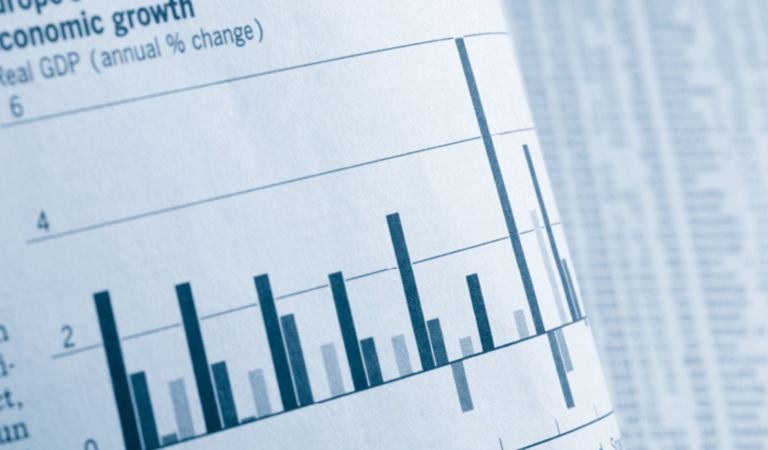Global equities (+3.5%) rose in the second quarter. The global landscape was marked by disparities in inflation and economic growth across countries, while robust earnings from a select group of mega-cap technology companies helped propel the MSCI ACWI Index to all-time highs in the period. The European Central Bank (ECB) began easing interest rates in June, while the US Federal Reserve (Fed) held its policy rate steady. Financial market expectations for the Fed to begin easing monetary policy were pushed into the second half of the year amid sticky inflation and moderating economic indicators. Global economic growth remained solid as the J.P.Morgan Global Composite Purchasing Managers’ Index (PMI) reached a 12-month high. US investment spending remained strong, bolstered by megaproject subsidies, while US consumer spending softened. Consumption growth remained healthy across the European Union, supported by improving real wage growth. In Japan, the yen breached new 30-year lows against the US dollar. The Bank of Japan’s (BOJ’s) plans to hike interest rates were complicated by a larger-than-anticipated contraction in the country’s first-quarter GDP amid softer consumption and business spending as well as lower exports. China’s economic rebound was restrained by the ailing property sector despite several recent policy support measures. Amid Western sanctions, Chinese President Xi Jinping strengthened economic alliances with Russia as bilateral trade between the two nations rose. France’s far-right National Rally party and its allies swept to victory in the first round of legislative elections, although the final outcome of the elections remained uncertain. Indian Prime Minister Narendra Modi won a third consecutive term, but his Bharatiya Janata Party unexpectedly failed to win an outright majority in parliament, creating uncertainty about the government’s economic agenda.
Global fixed income markets eked out positive total returns during the second quarter, as measured by the Bloomberg Global Aggregate Index hedged to US dollars; coupon income helped offset the impact of higher sovereign yields and wider credit spreads. Markets wrestled with cyclical indicators pointing to a weakening global economy but slowing disinflation in some countries led to diverging central bank policies. Securitized sectors generally outperformed credit. Currencies ended mixed versus the US dollar.
Commodities (+0.7%) ended higher in the second quarter. Industrial metals, precious metals, and energy posted positive returns, while agriculture and livestock registered negative results.
Equities
United States
US equities (+4.3%) surged for the third consecutive quarter as the S&P 500 Index registered a series of record highs. Performance was narrowly driven by a select group of mega-cap technology companies, resulting in a significant performance differential between the market-cap-weighted S&P 500 Index and the equal-weighted version of the index, as well as the considerable outperformance of growth stocks versus their value counterparts. Annualized first-quarter GDP growth was revised lower to 1.4%, down from a blistering 3.4% pace in the fourth quarter, and economic data released during the quarter suggested that the economy continued to gradually moderate. Stubborn inflation and a still-tight labor market tempered expectations for interest-rate cuts by the Fed this year. The Fed’s preferred inflation gauge — the core Personal Consumption Expenditures Price Index — dipped to 2.6% year over year in May after remaining stuck in a narrow range of 2.8% — 2.9% over the previous five months. The Fed’s median dot-plot projection showed that policymakers expect only one 25 basis points (bps) reduction in interest rates in 2024, down from three cuts projected in March, although a majority of economists forecast two cuts this year. According to FactSet, first-quarter earnings for companies in the S&P 500 Index grew 5.9% year over year, but after excluding the Magnificent 7 companies, earnings for the index declined by 1.8%. President Joe Biden vowed to continue his campaign for a second term in office despite his poor performance in the first presidential debate fueling concerns about his candidacy.
Economic data released during the quarter showed that the US economy moderated but remained healthy. After a series of surprisingly robust results in the first quarter, the labor market cooled, primarily through reduced hiring and fewer job openings rather than widespread layoffs. In April, nonfarm payrolls registered their smallest monthly gain in six months, and job openings fell to their lowest level in over three years. In May, nonfarm payrolls increased more than expected, by 272,000, in a significant deviation from the household survey, which showed a decline of 408,000 jobs. The unemployment rate rose to 4.0% in May, from 3.8% in March. Consumer spending cooled amid the strains of high interest rates and elevated inflation. In May, headline retail sales increased only 0.1% after a 0.2% drop in April, and personal spending advanced only 0.2%, matching April’s result. Consumer confidence remained muted as the Conference Board’s Consumer Confidence Index eased to 100.4 in June, from 104.2 in March, on a more sober outlook for business conditions, the job market, and incomes. Highly elevated home prices and mortgage rates broadly curbed housing market activity. Pending, new-, and existing-home sales slumped during the quarter, and home construction in May was the weakest in four years. The manufacturing sector contracted modestly during the quarter, while the services sector expanded in May, propelled by the largest monthly gain in business activity since 2021. The National Federation of Independent Businesses Small Business Optimism Index remained historically depressed.
Within the S&P 500 Index (+4.3%), six of the 11 sectors posted positive results for the quarter. Information technology (+13.8%) was the best-performing sector, led by semiconductors & semiconductor equipment (+22.6%) and technology hardware, storage, & peripherals (+21.9%). Communication services (+9.3%) outperformed, as interactive media & services (+14.0%) contributed to the sector. Materials (-4.5%) was the worst-performing sector. Industrials (-2.9%) and energy (-2.6%) also underperformed.
Europe
European equities (+1.2%) rose in the second quarter. The European Commission’s Spring Forecast suggested a soft landing for the eurozone economy, with GDP projected to grow by 0.8% in 2024 despite heightened geopolitical risks. Growth is expected to be largely driven by a steady expansion in private consumption, driven by gains in real wages and employment. The HCOB Flash Eurozone Composite PMI fell to 50.8 in June, from 52.2 in May, significantly below market expectations of 52.5. However, the latest reading still signaled a fourth consecutive monthly increase in business activity, suggesting that GDP continued to expand modestly in the second quarter. Eurozone unemployment slipped to a historic low of 6.4%. Against a better economic backdrop, the ECB lowered interest rates for the first time since September 2019, but signaled concerns about strong inflation pressures from elevated wage growth. The central banks of Sweden and Switzerland cut rates, while the central banks of Norway and the UK left policy unchanged. Eurozone headline inflation rose slightly to 2.5% in June, from 2.4% in March, while core inflation remained stable at 2.9%. Persistently high services inflation of 4.1% matched the seven-month high reached in May and will likely dissuade the ECB from cutting interest rates in July. In June, the European Union announced additional tariffs of up to 37.6% on imported Chinese electric vehicles, brushing aside German government warnings that the move could start a costly trade war with China. First-quarter earnings for companies in the STOXX 600 Index are forecast to decline by 3.3% from a year earlier.
Europe’s manufacturing sector contracted over the quarter as the HCOB Eurozone Manufacturing PMI slipped to 45.8 in June, from 46.1 in March. The contraction in output accelerated at the fastest pace of the year, but encouragingly, business confidence rose to a 27-month high, and output prices continued to wane. The HCOB Flash Eurozone Composite PMI revealed that services sector activity in June improved for a fifth consecutive month, but the pace of growth was the softest since March. New orders rose to a 14-month high, and input costs and output prices continued to increase but at a slower pace. The European Commission’s Economic Sentiment Indicator edged down to 95.9 in June; consumer confidence improved marginally, while industry confidence was broadly stable.
In Germany (+0.0%), business conditions in the manufacturing sector weakened in June, as the rates of decline in output and new orders reaccelerated after the downward trend eased substantially in May. The ZEW Indicator of Economic Sentiment in June rose to its highest level since February 2022, but the assessment of the current economic situation deteriorated. In the UK (+3.6%), Prime Minister Rishi Sunak called for a general election on July 4, even as his Conservative Party significantly trailed the Labour Party in opinion polls. In June, the S&P Global Flash UK PMI Composite Output Index indicated that the manufacturing sector registered the sharpest rise in production levels for over two years, while services sector growth slowed for the second straight month. In France (-6.2%), President Emmanuel Macron shocked markets by calling a snap parliamentary election after his centrist alliance was trounced by Marine Le Pen’s far-right movement in elections for the European Parliament, triggering a sell-off in French stocks and bonds. While the outcome of elections remained uncertain, markets grew increasingly nervous about the country’s high level of public debt and large deficit, which makes its public finances more vulnerable to political gridlock or divergence from centrist policies.
Pacific Basin
Pacific Basin equities (+1.5%) ended higher. Australia (-0.7%) saw mixed economic results as inflation continued to accelerate and the economy slowed, as elevated interest rates and a high cost-of-living weighed heavily on households and activity broadly. The economy nearly stalled in the first quarter; GDP grew only 0.1% (1.1% annually), below estimates and the weakest since 1992, excluding the pandemic. In June, the Reserve Bank of Australia (RBA) maintained interest rates at 4.35% for a fifth straight meeting before it was reported that inflation in May accelerated faster than expected for a third straight month. The CPI climbed 4.0% from a year earlier, above estimates of 3.8%, while a closely watched measure of core inflation (the trimmed mean) rose 4.4% — the highest in six months and up from 4.1% in April. Stubbornly high services prices remained a critical concern for the RBA, and June’s inflation reading will be a key determinant for the bank’s next policy-rate decision in August. Unemployment fell to 4.0% in May, from 4.1%, and job gains exceeded estimates, highlighting the resilience of the country’s labor market amid elevated interest rates and high immigration. Housing rental values hit a record high in April, with the median rent rising 8.5% from a year ago and placing more pressure on consumers.
In Japan (+1.8%), lackluster consumption, persistent weakness in the yen, and a contracting economy complicated the BOJ’s efforts to tighten monetary policy and generated uncertainty about the time frame for additional interest-rate hikes. Japan’s economy shrank in the first quarter as consumers and companies cut spending; GDP fell at a 1.8% annualized pace, worse than forecasts of a 1.2% decline. GDP is widely anticipated to rebound in the second quarter, although lackluster consumption is a critical concern for the government and the BOJ, as the authorities seek evidence that demand can withstand persistent inflation. Inflation was mixed. The core CPI, excluding fresh food, accelerated 2.5% in May from a year ago, up from 2.2% in April and slightly below consensus. However, a narrower measure that strips out the effect of fuel declined for the ninth straight month, to 2.1%, from 2.4%, complicating the BOJ’s decision on how soon to raise interest rates and casting some doubt on its view that rising wages will boost consumption and keep inflation sustainably on track to hit 2.0%. Japan spent a record ¥9.8 trillion (US$62.2 billion) in April to prop up the yen after it fell to a 34-year low against the dollar. Markets speculated that the yen’s weakness could force the BOJ to raise interest rates to soften the impact of a higher cost of living. The BOJ held interest rates steady during the quarter. The bank will introduce a plan in July to reduce its huge bond purchases but did not provide details.
Singapore’s (+9.3%) first-quarter GDP accelerated at a greater-than-anticipated 2.7% pace from a year earlier, with growth in sectors such as construction, wholesale trade, and retail trade outweighing a decline in the manufacturing sector. The government maintained its economic growth forecast at 1% to 3% in 2024, thanks to improving economic prospects in the US and China. The CPI accelerated 3.1% year over year in May, from 2.7%, lifted by higher private transport costs. However, core inflation remained unchanged at 3.1% for the third consecutive month, as lower energy and goods prices offset an increase in the cost of services. This gave the central bank more scope to remain patient with interest-rate hikes. Employment growth continued to lose momentum, as total employment rose by 4,700 in the first quarter, down from an increase of 7,500 in the fourth quarter of 2023. Trade showed encouraging signs of a recovery; non-oil domestic exports in May fell only 0.1% compared to a year earlier, a significant improvement from a 9.6% drop in April.
Emerging Markets
Emerging markets (EM) equities (+6.3%) ended the quarter higher as Asia and Europe, the Middle East, and Africa (EMEA) increased, while Latin America declined.
In Asia (+8.3%), China (+7.1%) rebounded despite a slow and uneven economic recovery. The government unveiled more potent measures to combat the ongoing real estate crisis, including less restrictive mortgage rules, lower down payments for first- and second-time homebuyers, and funding to purchase unsold housing inventory. Thus far, the measures have not stabilized the downturn, as home prices in May continued to fall at an accelerated pace, and home sales by value tumbled 30.5% in the first five months of 2024 compared with the same period last year. The Chinese Securities Regulatory Commission sought to facilitate more listings on the Hong Kong exchange to reattract foreign capital, pivoting from restrictive policy. Taiwan (+16.8%) was driven sharply higher by stocks along the AI value chain, and first-quarter GDP accelerated 6.6% from a year earlier amid robust technology exports. In India (+10.3%), Prime Minister Modi won a third consecutive term in office, but his Bharatiya Janata Party unexpectedly lost its outright majority in parliament. Modi will now need to work with coalition partners to govern. India’s GDP grew at a robust 7.8% annual pace in the first quarter.
In EMEA (+1.1%), the war between Israel and Hamas raged on, and prospects for a ceasefire remained out of sight. Saudi Arabia (-6.6%) has raised more than US$54 billion this year for projects that reduce the economy’s reliance on oil. Funding came from increased debt, share sales of state-owned Aramco, and reduced US stock holdings. First-quarter GDP shrank 1.7% year over year as declining oil activity curtailed growth. In South Africa (+8.5%), President Cyril Ramaphosa’s African National Congress party lost its 30-year parliamentary majority in the national election and agreed on a coalition with the Democratic Alliance and a host of smaller parties. The United Arab Emirates (UAE) (-2.3%) dropped as ongoing geopolitical tensions in the region, oil market volatility, and changing US monetary policy expectations contributed to the decline. In Türkiye (+23.2%), the country’s main opposition party retained control over key cities and made meaningful gains in local elections, a blow to President Recep Tayyip Erdoğan’s AK Party. Interest rates were held at 50% in June, as inflation accelerated to 75% year over year in May.
In Latin America (-3.9%), Brazil’s (-2.5%) central bank reduced interest rates in May by a smaller increment of 25 bps, to 10.5%, after six consecutive cuts of 50 bps. President Luiz Inácio Lula da Silva stated he is not considering spending cuts to address the growing budget deficit, even as the government struggles to boost revenue. In Mexico (-7.5%), stocks fell and the peso tumbled after Claudia Sheinbaum won the presidential election and the ruling Morena party won a supermajority in Congress. Markets were rattled by the potential for diminishing checks and balances on presidential power and highly divisive constitutional reforms that are viewed as unfriendly to markets and that could prompt capital flight. Chile’s (-4.2%) central bank continued to slash interest rates, and first-quarter GDP grew at the fastest rate since 2021 as mining output and consumption increased.
Fixed Income
US real GDP grew at a slower pace and missed expectations, driven by weaker exports and consumption. The waning pace of disinflation led markets to dial back Fed rate-cut expectations. In the eurozone, economic growth surprised to the upside although the manufacturing and services PMIs contracted. UK economic growth exceeded estimates amid strong services activity, while inflation fell. China’s Caixin manufacturing PMI rose to its highest level in almost two years, led by gains in production and new orders. Japanese economic growth contracted on weaker construction data, although retail sales and industrial production surprised to the upside late in the period.
Developed market sovereign yields ended broadly higher, but late in the quarter, retraced a portion of the earlier sell-off as the Fed leaned more hawkish than expected and as geopolitical uncertainties in Europe triggered a bout of risk aversion. Major central banks diverged on their inflation outlook and their monetary policy paths in response to varying domestic growth and inflation dynamics. The Fed and the Bank of England held policy rates steady but appear poised for accommodation in the second half of 2024 amid expectations for moderating inflation. The Swiss National Bank opted for a second interest-rate cut as inflation pressures eased. The Bank of Canada and ECB reduced rates in widely telegraphed decisions but did not commit to significant easing cycles. The BOJ held rates steady but anticipates tighter policy due to greater confidence in the sustainability of domestic inflation.
Currencies
The US dollar ended mixed, weakening earlier in the period on delayed Fed rate-cut expectations, then rallying on safe-haven flows. Among the G10, the Japanese yen continued to underperform, weighed down by the market’s fading confidence in the BOJ’s commitment to tightening policy. Commodity-linked currencies (Australian dollar, New Zealand dollar) and high-beta currencies (Norwegian krone, Swedish krone) led the gains. EM currencies broadly weakened versus the dollar, particularly in Latin America. The Mexican peso fell sharply after the presidential election sparked unease that the government could implement measures that are unfavorable to international investors. The Colombian peso and Brazilian real also depreciated amid declining interest rates and concerns about slowing global economic growth, while the Chilean peso appreciated thanks to a sharp recovery in copper prices.
Commodities
Energy (+0.7%) rose modestly during the quarter. US natural gas (+18.1%) prices surged due to temporary production disruptions resulting from pipeline maintenance, warmer-than-expected weather forecasts, and recovering liquified natural gas demand. Over the period, crude oil (+1.2%) ended higher, while gas oil (-1.6%), heating oil (-3.1%), and gasoline (-4.8%) prices slipped. Demand for crude oil was supported by intensifying tensions between Israel and the Iran-backed Hezbollah militia, stronger-than-anticipated hurricane activity in the Atlantic, and robust summer driving, while extended OPEC+ production cuts into the third quarter of 2024 tempered supply. Still, deepening oversupply and weak domestic demand weighed on refiners’ profits.
Industrial metals (+8.2%) rallied as the complex posted broadly positive returns. Zinc (+20.0%), copper (+8.1%), aluminum (+7.3%), lead (+7.1%), and nickel (+3.2%) were bolstered by improving demand for energy-transition metals, a resurgence of manufacturing activity in the US, and Chinese supply disruptions. The recently imposed bans by the Chicago Mercantile Exchange and the London Metal Exchange on Russian metals produced on or after April 13 also supported base metals prices.
Precious metals (+6.0%) ended higher. Silver (+17.8%) and gold (+4.9%) prices remained elevated due to persistent geopolitical uncertainty, robust central bank demand, and strong retail demand in Asia.
Agriculture & livestock (-3.6%) moved lower. Cotton (-20.8%) tumbled amid weak demand, a stronger US dollar, and waning sentiment. Additionally, favorable soil and moisture levels across southern growing regions of the US provided an optimistic production outlook. Lean hogs (-10.5%) slid as the supply of slaughter-ready hogs continued to outweigh consumer demand. Corn (-9.9%) prices ended lower as higher-than-anticipated corn acreage estimates by the United States Department of Agriculture and improved growing conditions across the US provided an optimistic outlook for supply. Feeder cattle (+1.1%) and live cattle (+5.6%) prices were supported by strong wholesale beef prices, while supplies remained tight. Coffee (+22.6%) surged as inventories declined to a decade low, while global consumption remained strong at a 20-year high. Additionally, excessively dry weather in the growing regions of Vietnam and Brazil weighed on production and supply.




























Monthly Market Review — October 2025
A monthly update on equity, fixed income, currency, and commodity markets.
By